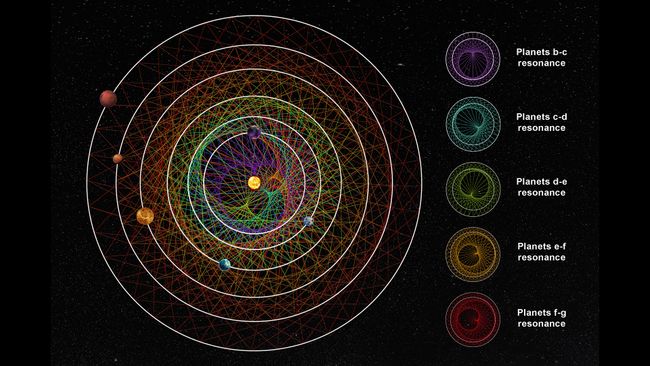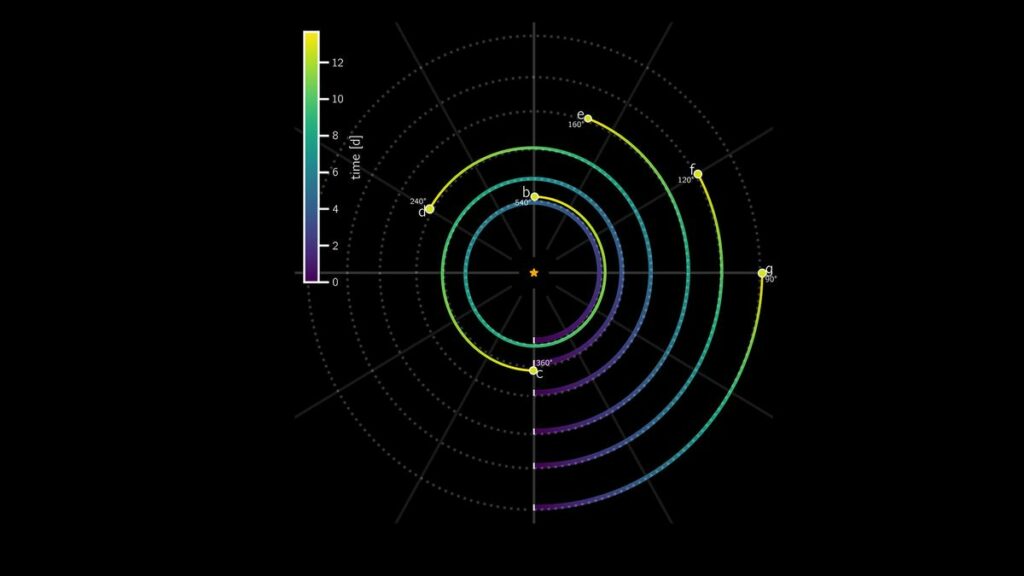For Four Billion Years, Six Extraterrestrial Worlds Have Been Dancing in Perfect Harmony
New research proposes that six exoplanets, spanning sizes from Earth to Neptune, have maintained synchronized orbits since their formation approximately 4 billion years ago around a common star.
Astronomers have unearthed an extraordinary star system featuring six planets distinct from those in our solar system. Recent research reveals that all six planets share a resonance, orbiting the same star in a synchronized rhythm that has persisted for billions of years.

This unique resonance results in the outermost planet completing a full orbit around its star in the same duration it takes the innermost planet to complete six orbits. The other four planets exhibit similar rhythmic patterns, collectively engaging in what the researchers describe as a precise cosmic “waltz.”
Details about this exceptional system, designated HD 110067, were documented in the journal Nature on November 29.
Hugh Osborn, a scientist at the University of Bern and co-author of the study, highlighted the uniqueness of the HD 110067 system, stating, “There are several remarkable aspects to the HD 110067 system.” He explained that firstly, all six planets exhibit orbits finely synchronized in a rare phenomenon known as resonance. Secondly, the star itself is exceptionally bright, marking it as the brightest star identified to date that accommodates more than four transiting planets.
Exploring a tranquil system of planets.

Orbiting a luminous yellow star roughly 100 light-years away in the constellation Coma Berenices, there are six exoplanets, or extrasolar planets, with sizes ranging from Earth to Neptune, categorizing them as mini-Neptunes or “sub-Neptunes.” Unlike our solar system, which lacks planets of this size, the HD 110067 system provides astronomers with an opportunity to examine the evolution of such exoplanets.
The distant worlds’ peaceful existence is evident from their ongoing rhythmic synchronization. This is particularly significant because, during the formation of planets from collapsing clouds of gas and dust around young stars, resonances often occur. However, these resonances are typically disrupted by violent events such as orbital shuffling, collisions, or mass loss.
Scientist Hugh Osborn from the University of Bern emphasized the stability of the HD 110067 system, stating that the preserved resonance implies the planets have remained largely unchanged for billions of years.
The investigation into this system commenced in 2020, prompted by observations from NASA’s Transiting Exoplanet Survey Satellite (TESS), which identified a dip in the star HD 110067’s light, indicating the transit of an undiscovered planet across its face. Subsequent observations with the Characterising Exoplanet Satellite (CHEOPS) revealed the presence of six planets, all transiting the star—a rare arrangement.
The resonance among the planets results in specific orbital periods: the innermost planet completes an orbit in 9.1 Earth days, followed by the next in 13.6 days, the third in 20.5 days, the fourth in 30.8 days, the fifth in 41 days, and the outermost in 54.7 days. Notably, for every orbit of the outer star, the inner star completes six orbits—a 6:1 resonance. Other resonances between different pairs of planets in the system include 3:2, 3:2, 3:2, 4:3, and 4:3. This intricate resonance pattern has contributed to the discovery of these new planets, marking the first time resonances have played a key role in such a discovery.
Celestial Bodies in Sync and Beyond
Apart from the intriguing resonance, the planets within the HD 110067 system possess individual characteristics that capture scientific interest, as highlighted by lead study author Rafael Luque, an astronomer at the University of Chicago, during a news conference on Tuesday (Nov. 28). These planets exhibit dimensions two to three times larger than Earth, and although the exact compositions are not definitively known, they appear to be comprised of ice or rock, featuring low densities suggestive of extended atmospheres containing hydrogen and helium. Furthermore, there is the possibility of additional planets orbiting HD 110067.
Given that all the planets regularly transit in front of their brilliantly illuminated star, they represent some of the most easily characterized exoplanets. Hugh Osborn emphasized the immense value of such systems, stating that they are “worth their weight in gold.” He expressed confidence that the James Webb Space Telescope, in the near future, will be capable of scrutinizing the atmospheres of these planets, potentially identifying molecules like methane that could hint at the presence of underlying oceans.
This article is republished from LiveScience under a Creative Commons license. Read the original article.
Do not forget to share your opinion with us to provide you with the best posts !




0 Comments